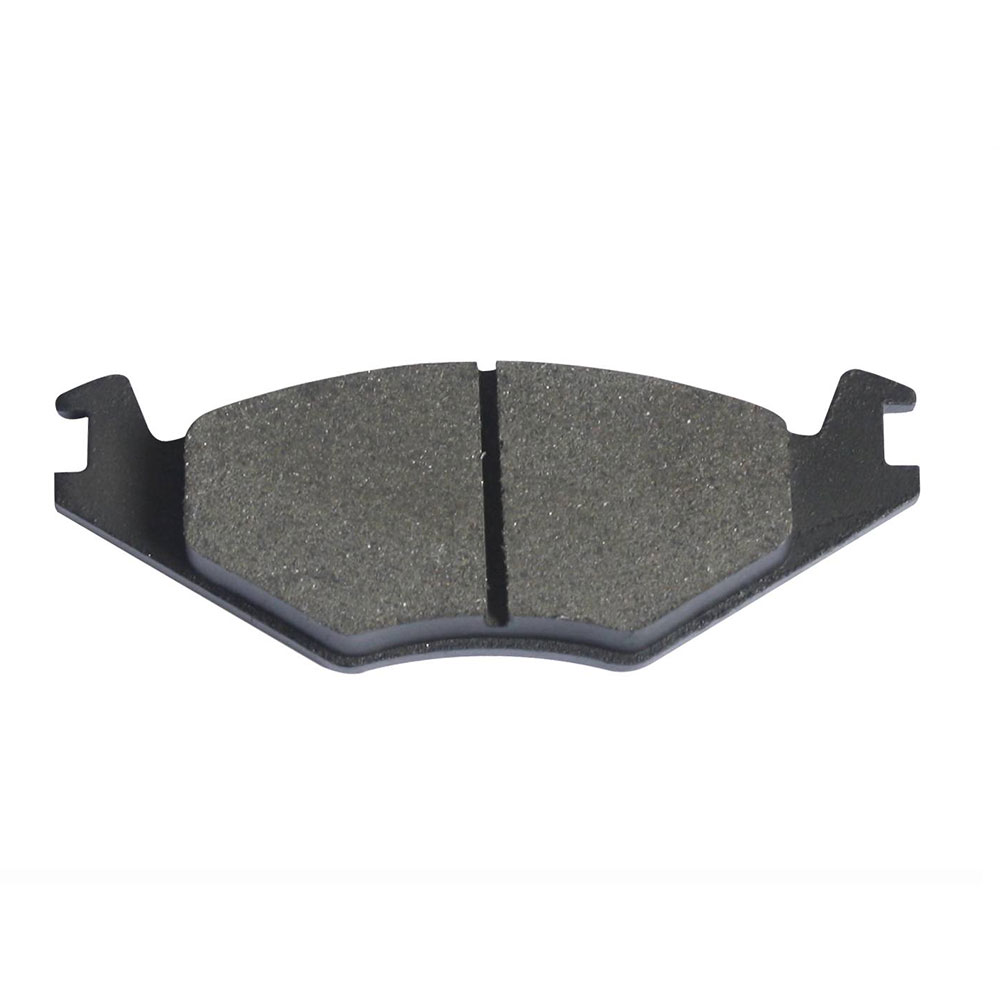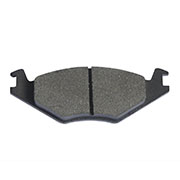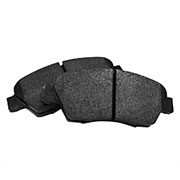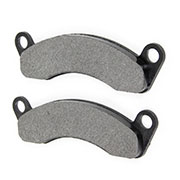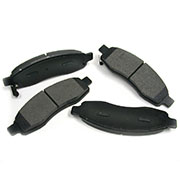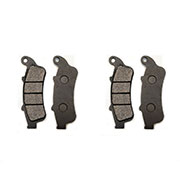
Our experience and expertise in automobile industry helps us to make suspension and steering parts as per your specification with high quality and finishing.
Brake pads are a component of disc brakes used in automotive and other applications. Brake pads are steel backing plates with friction material bound to the surface that faces the disc brake rotor.
Function
Brake pads convert the kinetic energy of the car to thermal energy by friction. Two brake pads are contained in the brake caliper with their friction surfaces facing the rotor. When the brakes are hydraulically applied, the caliper clamps or squeezes the two pads together into the spinning rotor to slow/stop the vehicle. When a brake pad is heated by contact with a rotor, it transfers small amounts of friction material to the disc, turning it dull gray. The brake pad and disc (both now with friction material), then "stick" to each other, providing the friction that stops the vehicle.
In disc brake applications, there are usually two brake pads per disc rotor, held in place and actuated by a caliper affixed to a wheel hub or suspension upright. Although almost all road-going vehicles have only two brake pads per caliper, racing calipers utilize up to six pads, with varying frictional properties in a staggered pattern for optimum performance. Depending on the properties of the material, disc wear rates may vary. The brake pads must usually be replaced regularly (depending on pad material), and most are equipped with a method of alerting the driver when this needs to take place. Some are manufactured with a small central groove whose eventual disappearance through wear indicates that the pad is nearing the end of its service life. Others are made with a thin strip of soft metal in a similar position that when exposed through wear causes the brakes to squeal audibly. Still others have a soft metal tab embedded in the pad material that closes an electric circuit and lights a dashboard warning light when the brake pad gets thin.
Types
There are numerous types of brake pads, depending on the intended use of the vehicle, from very soft and aggressive (such as racing applications) and harder, more durable and less aggressive compounds. Most vehicle manufacturers recommend a specific kind of brake pad for their vehicle, but compounds can be changed (by either buying a different make of pad or upgrading to a performance pad in a manufacturer's range) according to personal tastes and driving styles. Care must always be taken when fitting non-standard brake pads, as operating temperature ranges may vary, such as performance pads not braking efficiently when cold or standard pads fading under hard driving. In cars that suffer from excessive brake fade, the problem can be minimized by installing better quality and more aggressive brake pads.
Materials
The five most important characteristics that are considered when selecting a brake pad material are as follows:
- The material's ability to resist brake fade at increased temperatures
- The effects of water on brake fade (all brakes are designed to withstand at least temporary exposure to water)
- The ability to recover quickly from either increased temperature or moisture
- Service life as traded off vs. wear to the rotor
- The ability of the material to provide smooth, even contact with the rotor or drum (rather than a material that breaks off in chunks or causes pits or dents).


